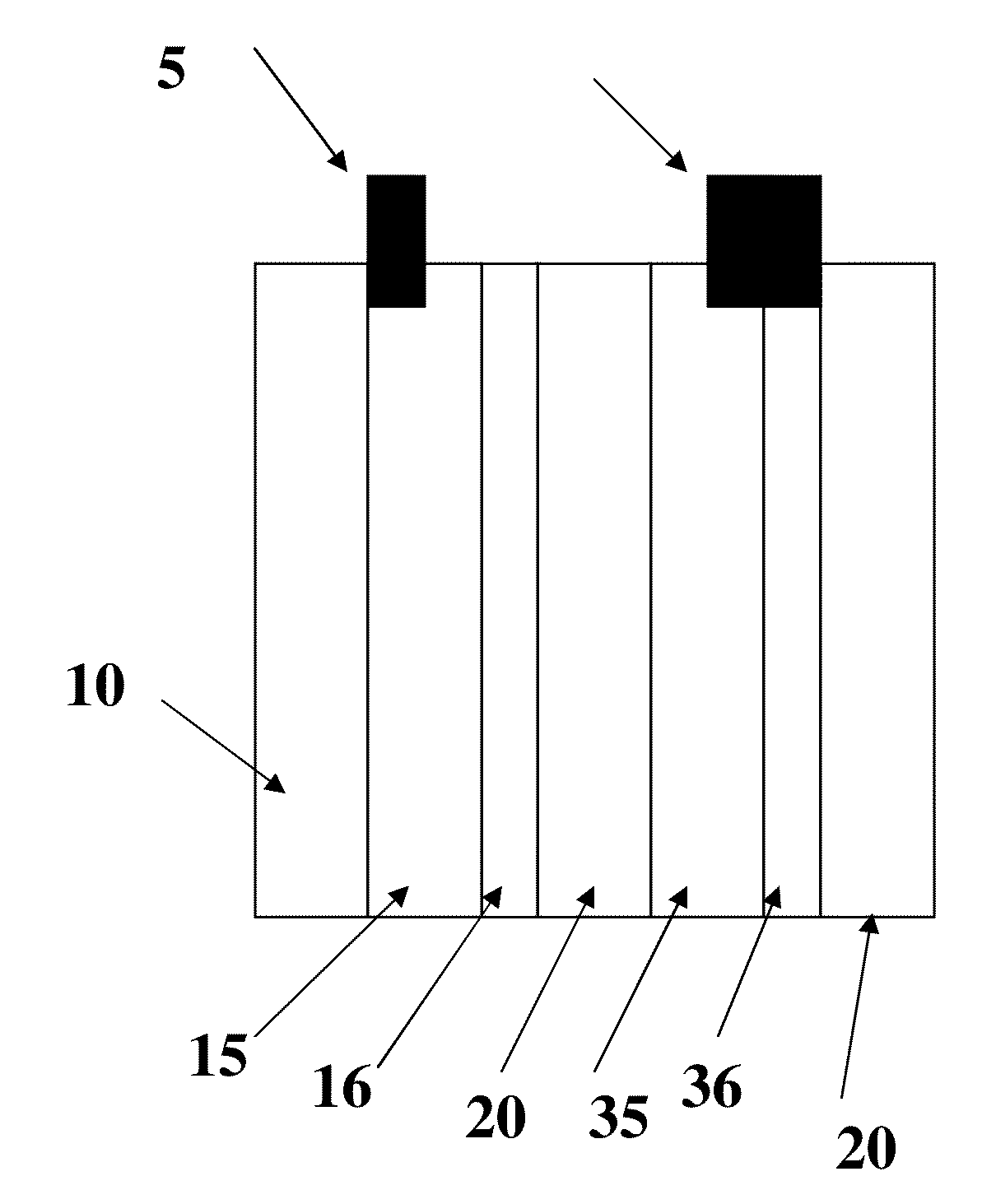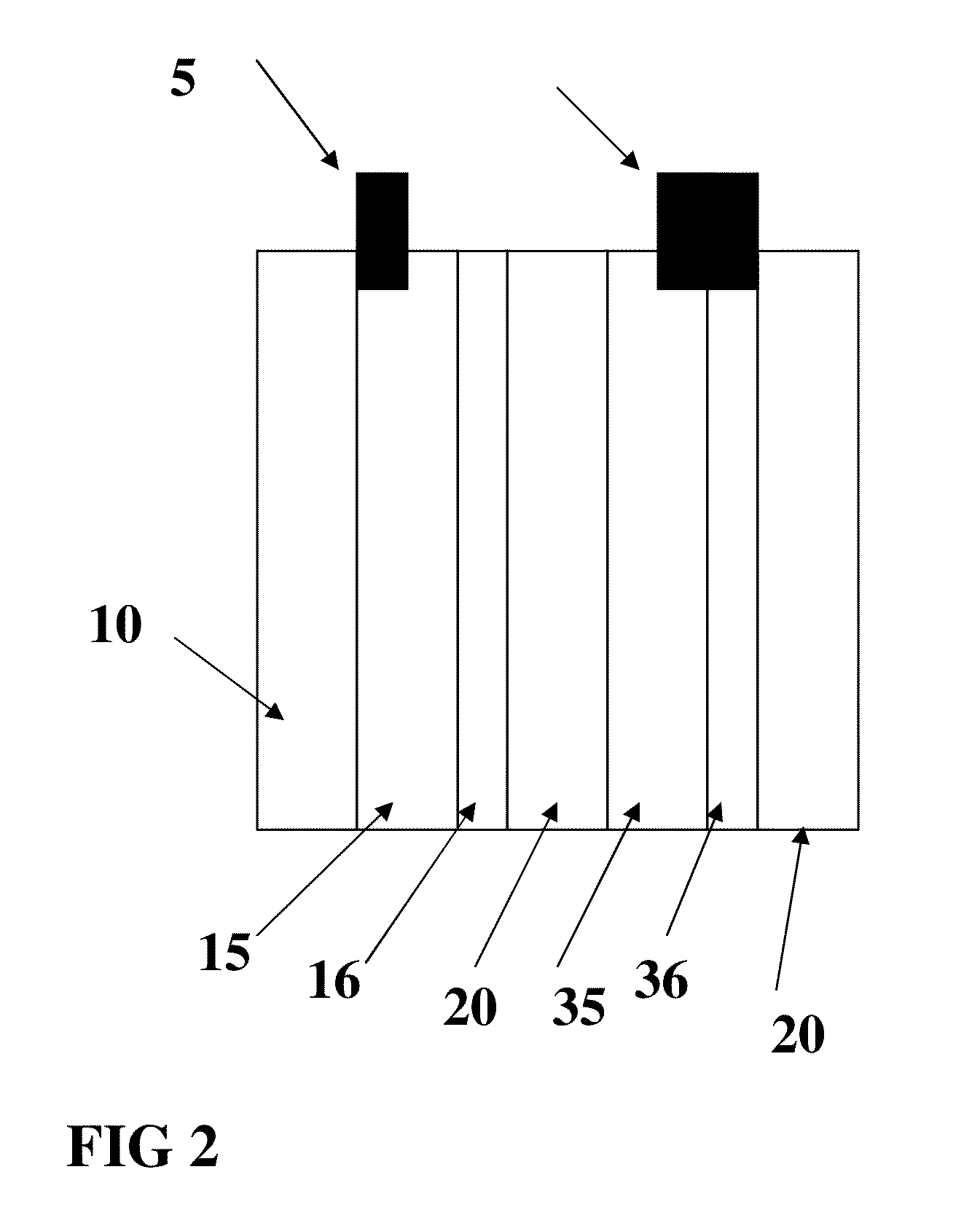Anode, cathode, grid and current collector material for reduced weight battery and process for production thereof
a collector material and battery technology, applied in the field of lightweight battery materials, can solve the problems of high cost, increased battery weight, and rigid metal foil when used in prismatic cell design, and achieve the effects of low cost, good adhesion, and high bond strength
- Summary
- Abstract
- Description
- Claims
- Application Information
AI Technical Summary
Benefits of technology
Problems solved by technology
Method used
Image
Examples
example
Preparation and Test Results for Samples
[0050]The first sample (sample 1) was made with a conductive polymer, Acheson Electrodag—PF 427, a polymer ink with ATO that has a low solids content and high resistance level when applied in a thin layer. A mixture of carbon nanotubes was formed by adding 0.056 grams of SWNT selected from a group of carbon nanotubes where the average diameter is less than 20 nanometers, and more preferably less than 10 nm, to 40 ml acetone. The mixture was sonicated using a SANYO MSE SONIPREP 150 tuned to 23 kHz at high power for 30 minutes while ensuring that the acetone level did not drop below the 40 ml mark. In instances in which the acetone dropped below 40 ml, more acetone was added. The solvent temperature was monitored. The mixture was removed from heat and sonication and allowed to cool. The resulting mixture was a dispersion of SWNT.
[0051]In a next step, 0.87 grams of Acheson Electrodag—PF Acheson PF-407C, which is a dispersion of conductive carbon ...
example 2
Battery Manufacture
[0058]Referring now to FIG. 2, an anode 15 and an anode current collector 16 was prepared using a dispersion system modified with conductive carbon nanotubes as in sample 1. The material was applied to the substrate (a Hollytex 3234 panel) which was 4 inches by 2 inches to form current collector 16 and dried by warm air at approximately 90 degrees C. for 20 minutes. This panel is shown in FIG. 1. The panel was then coated with a dispersion of 80% by weight of graphite flake and 20% by weight of KYNAR FLEX 2801 polymer binder suspended in N-Methyl-2-Pyrrolidone (NMP) on both sides of the Hollytex panel. The panel was then dried to form anode 15. A copper tab 5 was then welded to the Hollytex panel by using ultrasonic energy as described in co pending application Ser. No. 11 / 897,077 entitled “Bondable conductive ink,” the disclosure of which is incorporated by reference herein. A linen panel 4 inches by 2 inches was then used to form a cathode current collector 36 f...
PUM
 Login to View More
Login to View More Abstract
Description
Claims
Application Information
 Login to View More
Login to View More - R&D
- Intellectual Property
- Life Sciences
- Materials
- Tech Scout
- Unparalleled Data Quality
- Higher Quality Content
- 60% Fewer Hallucinations
Browse by: Latest US Patents, China's latest patents, Technical Efficacy Thesaurus, Application Domain, Technology Topic, Popular Technical Reports.
© 2025 PatSnap. All rights reserved.Legal|Privacy policy|Modern Slavery Act Transparency Statement|Sitemap|About US| Contact US: help@patsnap.com



